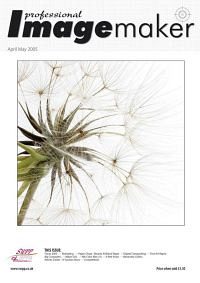articles/Projects/ayucatanstory-page1
A Yucatan Story - Monte Zucker - part 1 of 1 2 3 4 5 6
Published 01/04/2005
Who Teaches the Teacher? I've often heard it said that the teacher learns from his students. Such has certainly been the case for me. My Photoshop guru, Eddie Tapp, was in my classes years ago when he was first becoming a photographer in Dallas, Texas. Now, I study with him every time that I get a chance to attend one of his five-day classes or to watch him even for a few moments at a convention appearance.
It's the only way in which I can try to stay abreast of some of the techniques that he has developed with each successive edition of Photoshop. I use at least a few of the techniques which he has taught me on almost every single one of my photographs.
My step-by-step Photoshop technique:
My routine for working on almost all of my digital images is:monte zucker image 1
1. Make a duplicate layer and go Image/Adjust/Automatic Levels. I then adjust the opacity of that layer to taste.
2. Once again, I make a separate layer (this is my REAL LOVE!) and go Image/Adjust/Shadows and Highlights (CS Photoshop only). This opens up some of the dark areas with detail that I was never able to get before. Of course, you adjust this to taste too. Once I got to where I almost always liked the settings, I set that as my default, making final adjustments from there. Using the highlight slider, I'm also able to bring back details in some of the lighter areas that I thought weren't there.
3. Of course I do some retouching with the healing brush. I do this on another duplicate layer, usually set to 50% opacity. This allows some of the original to show through, keeping the retouching very natural looking.
4. I finalise most of my images by "burning-in" the edges of the pictures by making one more layer, going to Image/Adjust/Curves and bringing down the highlight side about half-way. This darkens the entire image. Then, I erase the area where I want it left as-is. The final step of this procedure is to decrease the opacity of this layer to get the desired amount of burning-in.
I flatten the layers as I go along just to keep the image easy to work with.
I'm constantly looking for photographic approaches that differ from mine, but still stay within the realm of adaptability for me.
Taking at least one or two classes a year myself, is one of the things that keeps me excited professionally and constantly growing as a photographer. I select my teachers by observing the images that they're producing and by learning from others if these photographers are also good teachers.
Such was the case recently when I took a class with Robert Lino, from Miami, Florida, and hosted in Merida, Mexico by Michele Gauger. Michele hosts several classes a year in Mexico, calling them the Yucatan Experience. I, too, am a teacher for one of them annually.
Both Michele and Robert had studied with me in the past; now, I was learning from them. And learn I did. Each day I marvelled at what Robert was able to accomplish with the simplest of equipment. As a matter of fact, he was using no equipment other than his Canon digital camera. No reflectors. No flashes. Nothing! That interested me, since I use so many accessories to create my photographs. I wanted to see how he did it.
You are currently on page 1
- A Yucatan Story - Monte Zucker page 1
- A Yucatan Story - Monte Zucker page 2
- A Yucatan Story - Monte Zucker page 3
- A Yucatan Story - Monte Zucker page 4
- A Yucatan Story - Monte Zucker page 5
- A Yucatan Story - Monte Zucker page 6
1st Published 01/04/2005
last update 09/12/2022 14:51:22
More Projects Articles
There are 0 days to get ready for The Society of Photographers Convention and Trade Show at The Novotel London West, Hammersmith ...
which starts on Wednesday 15th January 2025





